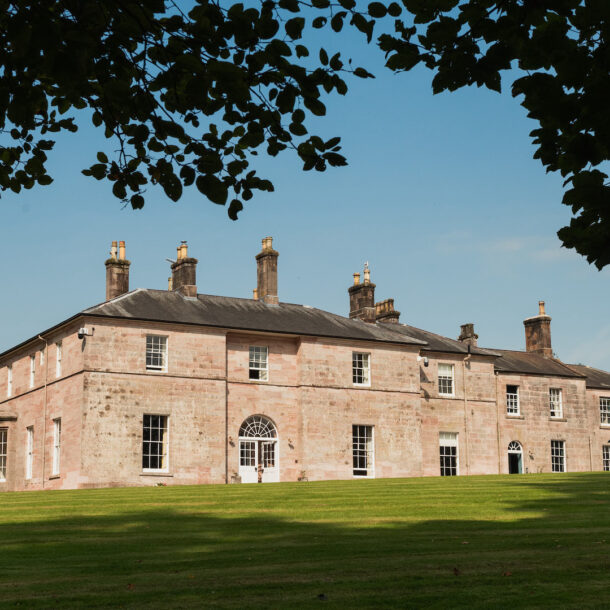

Close

Georgiana Huntly (1804-1874) bridged two worlds. Her father was the heir of one of the richest and most powerful noble families in Scotland, the Duke of Gordon. He also happened to be a libertine with many lovers and a penchant for drinking, gambling, and spending more money than even an heir to one of the largest estates in Scotland could afford. Little is known of her mother except that she lived in London in a social milieu far apart from the Gordons.
Georgiana’s father, the future fifth Duke of Gordon, acknowledged her from birth and served as a godfather at her baptism. She grew up in a liberal, highly educated circle of Regency London. She attended a Catholic convent school alongside the children of refugees from the French Revolution. French was her second mother tongue, and she studied texts in their original Hebrew and Latin. Not only was she unusually well educated for a young woman of the time, but she was also a precocious girl with bright blue eyes, dark hair, and a nature both observant and eager to please.
One day in a London shop, Georgiana, still a child, saw a Frenchman struggling to communicate with the sales clerk. She stepped in to help translate. He was a French prisoner on parole in London during the Napoleonic wars. Before his ill-fated stint as a soldier, he had been an artist. Now impoverished in a foreign country, he made jumping jacks and painted cartons for toy stalls to make ends meet. He offered to teach the young Georgiana art, and she and her mother accepted. While still a child, she showed remarkable talent that surpassed what was expected of an accomplished young woman of the period. Her keen observation of human nature enabled a particular talent for portraiture. She could at once capture someone’s likeness and their character. She studied watercolor with John Varley, a close friend and collaborator of William Blake, and miniature painting with Charles Hayter.
Georgiana’s mother fell from a wagon and suffered a severe injury to her head while Georgiana was a teenager. She was forever disabled and retreated to a seaside town. Georgiana’s grandfather sent for her to live with him in Scotland at Gordon Castle where he had sequestered himself away from the outside world while his wife entertained the leading lights of Tory high society in London. Georgiana went from a bohemian childhood in London to the wilds of northern Scotland where she would live in one of the country’s grandest homes. Her grandfather had expanded the castle extravagantly until its facade alone stretched 568 feet. The interior of the castle was just as magnificent as its exterior, its halls filled with masterpieces of European art. For the first time in her life, Georgiana had a room of her own where she could paint and draw. The Crimson Room, as it was called, had once been the famous poet James Beattie’s preferred room when visiting the Gordons. She spent hours studying and sketching paintings by Van Dyck, Titian, Holbein, and Raeburn that hung in the grand private galleries. The castle was situated amid formal gardens with statues, fountains, and ornamental lakes. 1500 acres of woods and parklands surrounded the castle, which was in turn surrounded by tens of thousands of acres of Gordon property.
Georgiana’s grandfather treated her as a legitimate granddaughter. Indeed, he had acknowledged and supported his own illegitimate children, giving his natural daughters dowries rivaling those of his legitimate daughters. He kept his mistress, a former maid in the castle, in a large house with a walled garden in the nearby village and married her after his duchess died. The punishing Victorian mores that heaped shame on illegitimate children did not hamper grand old Scottish families who still lived as they had for centuries. Georgiana and her grandfather deliberated which of the grand Gordon duchesses of decades past most resembled young Georgiana, and he favored her more than many of his legitimate relations. A self-portrait from this period of Georgiana’s life reveals a beautiful, smiling girl of 20 with soft black curls and pink cheeks glowing with excitement for what life would bring. The bright, beautiful Georgiana brightened the days of her aging grandfather, who at times became depressed in his isolation. They became close friends, and her diaries revealed how closely she hung on to his stories and how fiercely she took his side in any family dispute.
While Georgiana possessed the delicate manners expected of a young woman of the period, her ambitions were unusual. Despite the many challenges facing a woman artist, she believed that she could forge her future through her art. She painted about 15 portraits while she lived at Gordon Castle, and another 35 after she moved to Edinburgh in her mid-twenties. At the top of a list of her paintings, she made her ambitions clear: She wrote for “fame” and “money.” She won medals for her miniatures and watercolors, but as a woman, she was not eligible for instruction at the Royal Academy, the institution that taught professional artists, launched careers, and provided the connections necessary for success.
Her grandfather’s sudden death in 1827 threw Georgiana’s life into disorder. Her father, whom she hardly knew, inherited the estates and the title of the fifth Duke of Gordon. The estate had been deep in debt because of profligate spending. To save himself and the future of the Gordon family, her father had married Elizabeth Brodie, a young heiress 24 years his junior. She was a shy woman with little by way of beauty but much by way of religious fervor. Her father had made his fortune in India during some of the East India Company’s most rapacious years of looting and exploitative business practices. Her dowry amounted to £100,000, and as her father’s only daughter, she stood to inherit a much larger fortune. Although the new duke still had to sell off great swathes of land to pay off the £400,000 debt he inherited, his prudent marriage saved the family from ruin.
Georgiana’s future was uncertain. There was no guarantee that her father’s wife would accept her. Amid her grief and fear, disaster struck at Gordon Castle: a fire destroyed the east wing, including her grandfather’s apartments and many of her favorite paintings. As the fire roared, the ceiling collapsed with a thunderous roar. Charred ruins greeted the procession carrying Georgiana’s grandfather’s coffin from London. Her father and his wife, just ten years older than Georgiana, accepted her into their household. Elizabeth, Duchess of Gordon, proved to be an oppressive presence. She forbade balls, novels, and theater. She was so puritanical that she even insisted that a portrait of the deceased duke as a four-year-old child wearing nothing but a plaid cloth around his waist be removed from view. When Georgiana fell in love with a wealthy Catholic cousin who could have promised her a comfortable future in her beloved Scotland, Elizabeth was so prejudiced against the Catholic church that she forbade the marriage.
Georgiana attempted to support herself with her art. Her portraits of women and children made her £250 in 1830, about £17,000 today. While her success was impressive, it was not enough. She had to marry, and at 26, she was already aging out of the marriage market. Georgiana married a distant Gordon relative, Andrew McCrae. Although he had little to no money and a drinking habit that augured little success, he was a Protestant and so met with Elizabeth’s approval. Later in life, Elizabeth did not honor her husband’s wish to bequeath money to Georgiana. Although Georgiana and Andrew had seven children who survived to adulthood, they never had a happy marriage. Andrew married her for money that never arrived in the amounts he had expected, and his family always disparaged her because of her illegitimate birth.
Andrew and Georgiana began their marriage in London where she enjoyed a wide circle of intellectual friends and painted steadily. But Andrew’s attempts at a legal career failed, in no small part because of his penchant for gambling and drinking. He decided to follow his brother to Australia. Georgiana unwillingly followed him to the young colony where the first English settlers had arrived only a generation before. Georgiana’s ambitions as a professional artist had long ago been thwarted, but she kept painting steadily despite the disapproval of her husband’s family. Because of her husband’s inability to find a steady, well-paying position, they moved constantly. With each move, she attempted to make a perfect home, contributing to architecture plans and applying her creative sensibility to her gardens. But stability always eluded the McCraes, and she had to abandon the homes she built. Eventually, she and Andrew separated.
Georgiana developed a soft, almost pointillist style and kept herself apprised of artistic developments in England, especially the radical vision of the Pre-Raphaelite school. She and her friends formed the epicenter of a small but influential circle of intellectual Australians. One of her paintings even became famous. Unlike many of her peers, she welcomed Aboriginal tribespeople into her home and befriended them. Her children played alongside children of the Boonwurrung tribe and taught each other their languages. She became especially close to one Boonwurrung woman, Eliza, and painted her portrait in traditional dress. It is one of the few colonial representations of an Aboriginal woman that shows a sensitivity to the individual, rather than racial prejudice. The painting is now on display in a museum at the McCrae Homestead.
Sources:
Georgiana Huntly McCrae’s diaries, which she wrote regularly from the age of 13
Georgiana: A Biography of Georgiana McCrae: Painter, Diarist, Pioneer by Brenda Niall
Australian Dictionary of Biography
“Artists in Society: A Melbourne Circle”